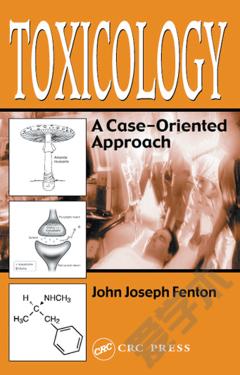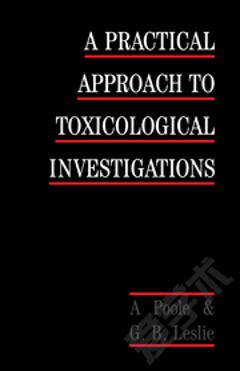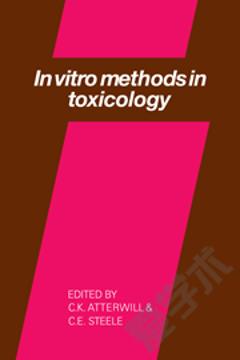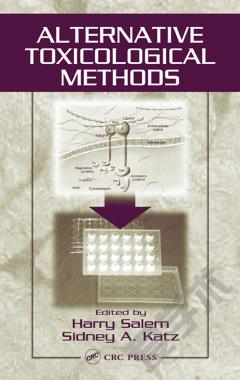Toxicology —— A Case-Oriented Approach
----- 毒理学
History of Toxicology Measuring Toxicology Therapy The Role of the Laboratory in Diagnosis and Treatment of Poisoning Introductory Toxicokinetics Biotransformation Hepatic Toxicity Renal Toxicology Cardiac Toxicity Neurological Toxicity Pulmonary Toxicology Drug Testing: Screening Confirmatory Tests in Toxicology Metal Analysis (Assay of Toxic Metals) Alcohols Toxic Gases Insecticides Metals Over-the-Counter Analgesics Drugs of Abuse Sedatives and Hypnotics Stimulants Anticholinergic Drugs Psychedelic Drugs Plants Snake Venoms Index SAMPLES Case - The Bright Orange Crystals A high school Chemistry student brought home some orange crystals for his science project. Unfortunately, they were not stored in a safe area and the student's two-year-old brother ingested approximately 1 gram of the crystals. The child immediately vomited an orange tinted material and his parents brought him to a local emergency department. Gastric lavage was attempted and ascorbic acid was provided intravenously. The patient was then transferred to a large, regional children's hospital. Vital signs at this time (three hours post-ingestion) showed normal temperature and blood pressure and moderate elevations of pulse and respiratory rate. Liver enzymes, renal function tests, and coagulation studies were all within normal limits. The child's condition deteriorated and he required intubation. He was given ascorbic acid as a continuous intravenous infusion. Diuretics were provided and a double volume exchange transfusion with 1.6 liters of whole blood was conducted. The patient exhibited some improvement from these therapeutic steps. Soon thereafter, however, the child became anuric and renal tests showed elevations of urea and creatinine. He became hypotensive and developed pulmonary edema. It was decided to initiate hemodialysis when peripheral edema became marked but this was discontinued after 3 hours as a result of increasing hypotension. Laboratory studies now revealed progressive deterioration of liver function and decline in coagulation status. The patient continued to receive aggressive supportive care but died 48 hours after the original ingestion. At autopsy the larynx was eroded with submucosal necrosis. The entire upper gastrointestinal tract was hemorrhagic and ulcerated. There was also extensive necrosis of the liver and the kidneys. Adrenal cortex was hemorrhagic and the brain was somewhat swollen. What were the orange crystals that the child swallowed? a) sodium salicylate b) ammonium dichromate c) citric acid d) barium sulfate Sodium salicylate is a medicinal agent similar to aspirin. It could be toxic but only in amounts much larger than 1 gram. Citric acid and barium sulfate are also toxic in relatively high amounts. Neither is orange colored nor is significantly toxic in a 1 gram quantity. Barium sulfate is quite insoluble so very little will be absorbed into the circulation. Ammonium dichromate is a very toxic orange colored chemical. Chromium is present in this salt in the more toxic +6 oxidation state. Questions Q2. Why was ascorbic acid given? a) It lessens the absorption of chromium VI (6+) b) it reduces chromium VI to III (3+) within the gut or blood c) it may prevent renal failure that occurs from chromium toxicity d) all of the above Q3. Why is chromium VI toxic? a) It selectively inhibits metabolic enzymes found in the liver b) It interferes with aerobic oxidation of glucose c) It undergoes intracellular reduction that forms free radicals d) It undergoes intracellular oxidation with a decrease in available free radicals Q4. What was this child's cause of death? a) Chromium-induced liver failure b) Chromium-induced renal failure c) Chromium-induced cardiac failure d) Widespread organ dysfunction Q5. This child's plasma chromium concentration peaked at 4163 mcg/L. How does this compare with normal levels? a) slightly above normal b) 10 fold greater than normal c) 100 fold greater than normal d) >1000 fold greater than normal History Since metals are natural products their role in poisoning and toxicology goes back to ancient times. Mercury, lead, and arsenic, in particular, have figured prominently in the history of industrial development and, for arsenic particularly, in the history of crime. There are many famous episodes involving arsenic. Ironically, one of the best known may not have actually been a case of arsenic poisoning. That would be the alleged murder of Napoleon Bonaparte with arsenic. Napoleon himself suspected it and asserted, " I die at the hands of my enemies ..." Those enemies were not the British who imprisoned him but rather the French monarchy who were most anxious that Napoleon never return to France. Evidence in support of the theory that Napoleon did, in fact, die from arsenic lies mainly in testing of the emperor's hair. Many locks of his hair are still in existence because of the common practice of giving hair to admirer's during the early nineteenth century, the time of Napoleon's imprisonment. The evidence from contemporary hair testing is mixed. Some locks show elevated levels of arsenic. The most recent testing tends to suggest that his hair did not have elevated arsenic. Further, any elevations that may have existed are not necessarily evidence of homicide. This is because of the fact that arsenical pigments were used in the draperies which hung in the emperor's chambers. In the equatorial and humid climate of St Helena, the island of Napoleon's exile, these pigments would have been acted upon by microorganisms and vapors rich in organic arsenicals would have resulted. The final judgment of history is perhaps still not available but it seems that the majority of those who have examined this riddle come down on the side of a natural death. Not only is the chemical evidence ambiguous but the medical conclusion of a large stomach carcinoma was well supported by many witnesses at his autopsy. Lastly, some of the expected findings for chronic arsenical poisoning, such as hyperkeratosis and hyperpigmentation were never observed.
{{comment.content}}








 京公网安备 11010802027623号
京公网安备 11010802027623号